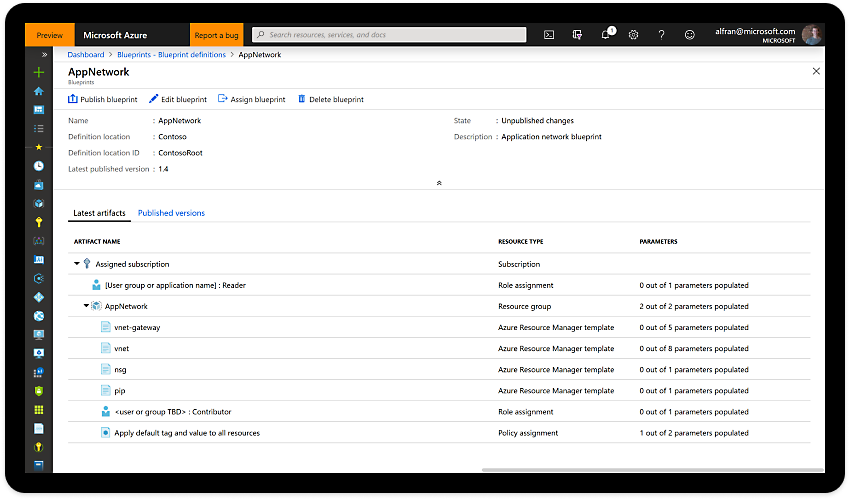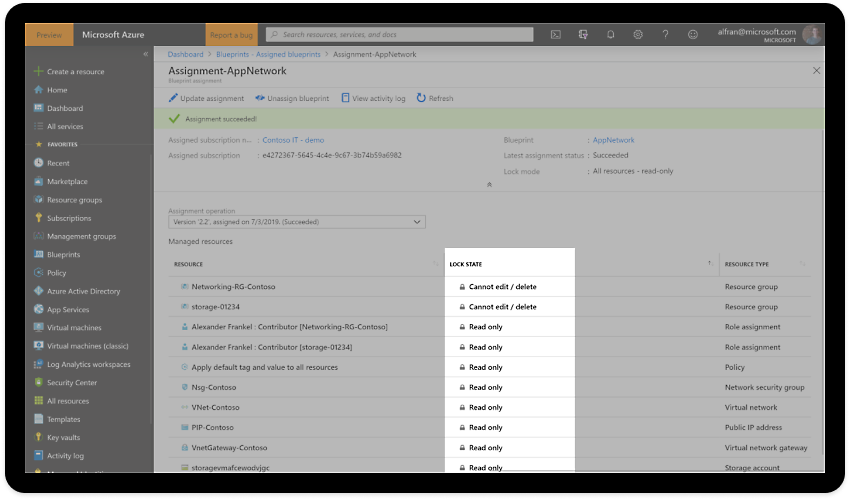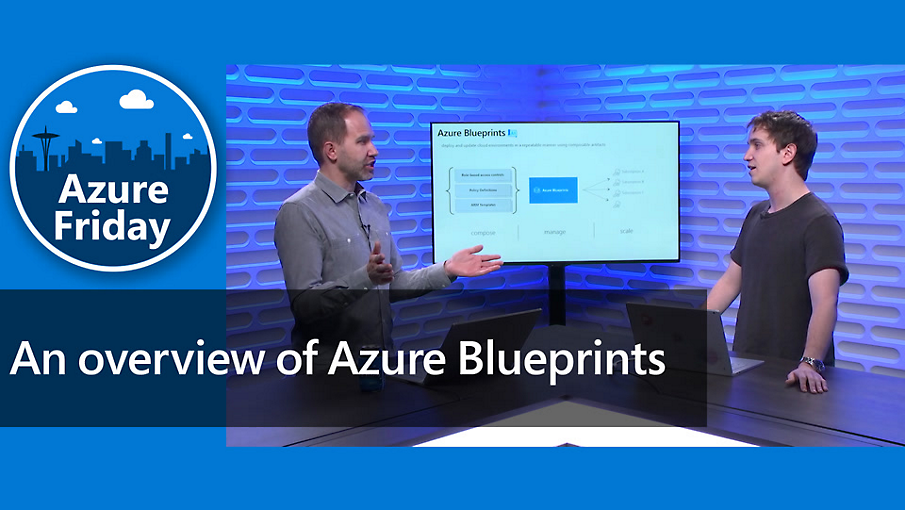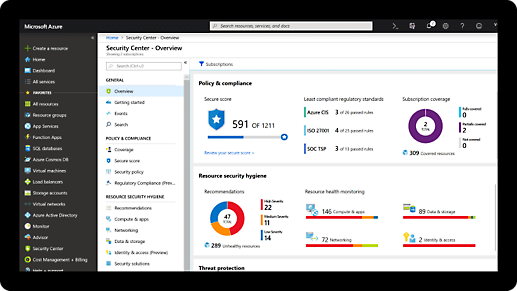Azure Blueprints PREVIEW
Enabling quick, repeatable creation of governed environments
Easily create, deploy, and update compliant environments
Simplify largescale Azure deployments by packaging key environment artifacts, such as Azure Resource Manager templates, role-based access controls, and policies, in a single blueprint definition. Easily apply the blueprint to new subscriptions and environments, and fine-tune control and management through versioning.
Policies, users, and resource templates for blueprint creation
Centralized location for managing your environment, including deployment, versioning, and updating
Built-in samples for most common scenarios, including compliance certification
Resource locking to prevent unwanted changes
Streamline environment creation
Easily create your cloud governance templates, access controls, and policies as a single compliant package so environments are ready to be configured. Deploy blueprints to multiple subscriptions with a single click. Manage blueprints from a central location and track blueprint versions to push updates.


Enable compliant development
Speed deployment of compliant applications to production through a self-service model, and easily deploy compliant environments matched to production standards. Use blank templates for custom blueprints or built-in blueprints for compliance with common internal scenarios and external regulations like ISO 27001.
Lock foundational resources
Avoid unwanted changes and misconfigurations—even by subscription owners—that could affect multiple applications. With resource locking, you can limit access to key infrastructure that’s shared across subscriptions. Protect resources that the blueprint is governing and configure exceptions to match your specific needs.


Create your landing zone for migrating to Azure
Accelerate migration by easily deploying a fully governed landing zone, without the need for external cloud architects or engagements. Reuse cloud-based blueprints for future environments or use built-in blueprints to set up ISO-compliant foundational architectures.
Comprehensive security and compliance, built in
-
Microsoft invests more than $1 billion annually on cybersecurity research and development.



-
We employ more than 3,500 security experts who are dedicated to data security and privacy.

-
Azure has more certifications than any other cloud provider. View the comprehensive list.
-
Azure Blueprints is free
Azure Blueprints and other Azure governance services are free for managing Azure services. Get pricing details.
Get started with an Azure free account
1

2

After your credit, move to pay as you go to keep building with the same free services. Pay only if you use more than your free monthly amounts.
3

Resources for getting started
Understand the lifecycle of a blueprint
Explore the stages of blueprint definition and assignment, including steps for adding artifacts, versioning, and assigning.
Prevent resource tampering
Learn how to lock resources within an Azure subscription to prevent modification by application owners.
Migrate to Azure
Get the resources to migrate apps, data, and infrastructure at your own pace, and use free assessment, migration, and cost management tools as you transition your on-premises workloads to Azure VMs.
Pay less on Azure: Amazon Web Services (AWS) costs five times more than Azure for Windows Server and SQL Server.
Frequently asked questions about blueprints?
-
A Resource Manager template is a key building block (artifact) of a blueprint definition. All your existing Resource Manager templates can be used in new blueprints. While Resource Manager templates are used only during deployment and do not preserve relationships with deployed resources, Azure Blueprints preserve these relationships, supporting improved tracking and auditing of deployments and the ability to upgrade subscriptions governed by the same blueprint. Learn more.
-
Yes, each blueprint has an API. This means blueprint definitions can be stored as code and pushed to Azure on an ongoing basis. Learn more about managing blueprints as code.
-
Blueprints are assigned to individual subscriptions but can also be used to set up resource groups within subscriptions. Additionally, a blueprint can be assigned to a subscription repeatedly, enabling you to set up multiple environments within the same shared environment.

